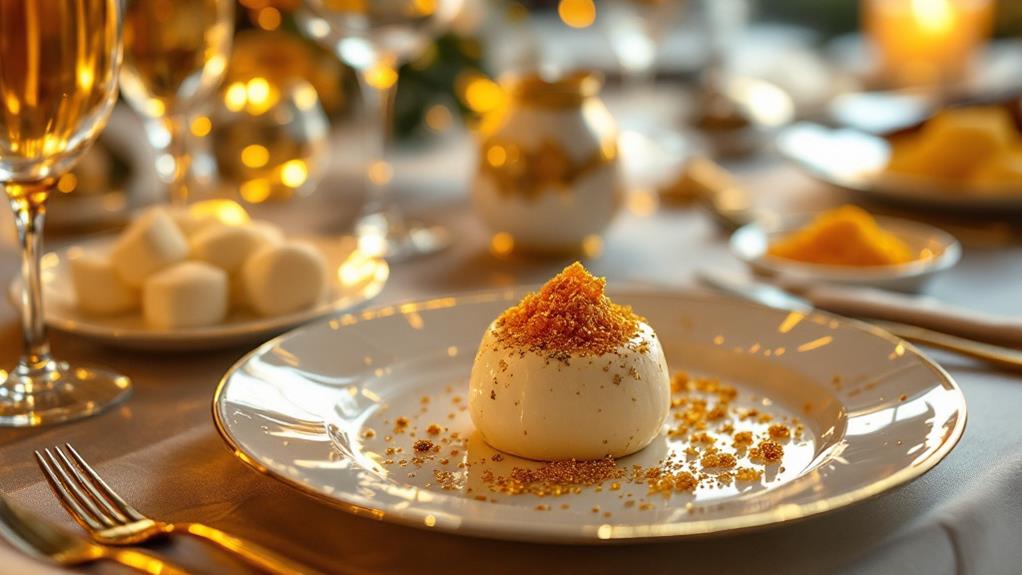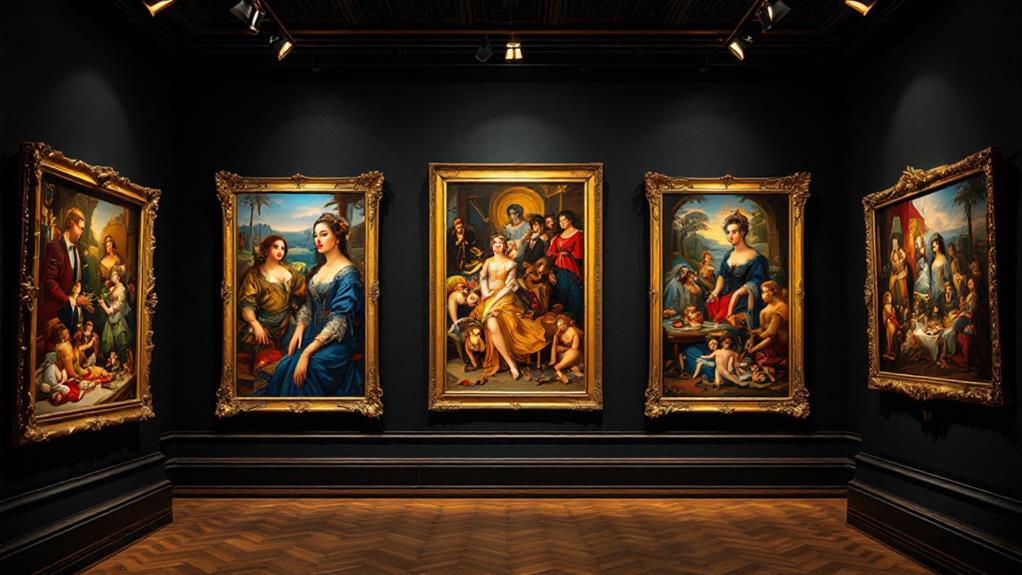The Most Expensive Wall Clocks Ever Made
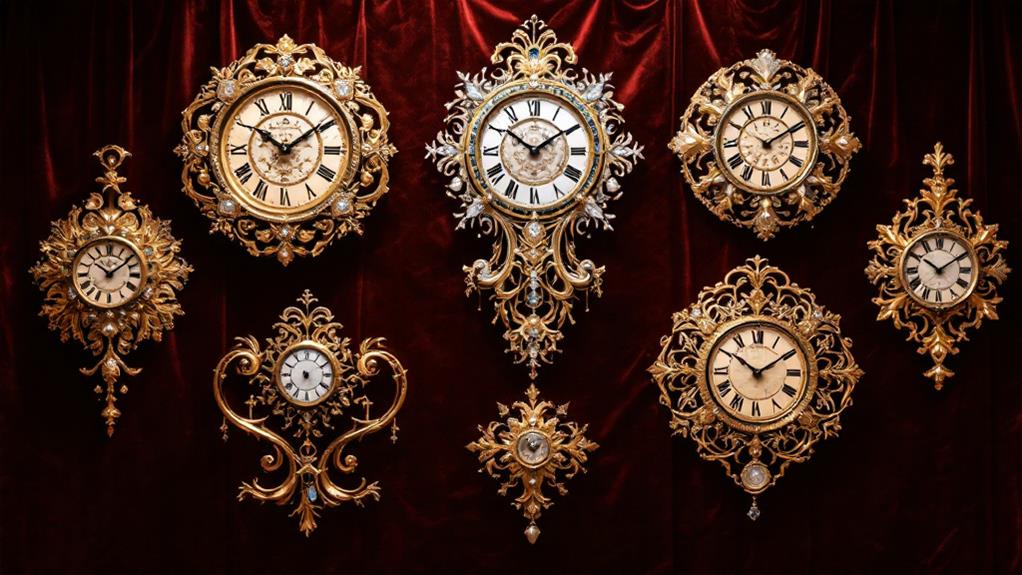
You'll be astounded by the prices of the most expensive wall clocks, featuring masterpieces like the Fabergé Rothschild Egg Clock, sold for $13.5 million. Another notable piece is the Breguet Duc D'orléans Clock, auctioned for $6 million, showcasing a unique mechanism. The Chinese Gilt Bronze Clock fetched $4 million, impressive with its animated elements. The 18th Century Automaton Clock, displaying intricate craftsmanship, was purchased for €2.8 million. Patek Philippe's Magpie's Gem Nest Clock exceeded expectations at $2.31 million with its gem-encrusted design. Thomas Tompion's clock, at €1.9 million, reflects timeless craftsmanship. Navigate further to understand their historical allure.
Fabergé Rothschild Egg Clock
The Fabergé Rothschild Egg Clock is a masterpiece of horological art that captivates with its intricate details and storied history. Created in 1902 by the renowned Peter Carl Fabergé, this exquisite timepiece was originally designed as an engagement gift for the illustrious Rothschild family. Its allure is not just in its beauty but also in its remarkable craftsmanship, featuring a blend of precious metals and gemstones that exemplify opulence.
Among the most expensive clocks ever sold, the Fabergé Rothschild Egg Clock fetched an astonishing £9 million (approximately $13.5 million) at a Christie's auction in London on November 28, 2007. This sale set a record, making it the most expensive clock ever to cross the auction block, further emphasizing its historical and financial significance.
What truly sets this clock apart is its unique mechanism—a rooster that emerges and flaps its wings every half hour, seamlessly merging horology and art. This extraordinary feature, along with its exquisite craftsmanship, makes the Fabergé Rothschild Egg Clock a coveted piece among collectors and historians alike. Its rarity and historical importance make it a timeless symbol of luxury and elegance.
Breguet Duc D'orléans Clock
While the Fabergé Rothschild Egg Clock dazzles with its opulent design and unique features, another marvel of horological history demands attention: the Breguet Duc d'Orléans Clock. Designed by the legendary Swiss watchmaker Abraham-Louis Breguet in 1795, this clock is a demonstration to both intricate craftsmanship and groundbreaking engineering. It combines a clock and a pocket watch, boasting the unique Sympathique mechanism that allows the clock to automatically wind the pocket watch—a feature that highlights Breguet's genius.
This extraordinary piece was sold at a Sotheby's auction for a staggering $6 million in December 2012, marking it as one of the most expensive clocks ever sold. The price reflects not only its exquisite design but also its historical importance and rarity. Only ten functional clocks with this Sympathique mechanism still exist, making it a coveted masterpiece for collectors and enthusiasts.
The value of the Breguet Duc d'Orléans Clock has appreciated markedly over time, as it previously sold for $5.25 million in 1999. This increase underscores the timeless appeal and enduring value of Breguet's work, making it a prized possession in the world of horology.
Chinese Gilt Bronze Clock
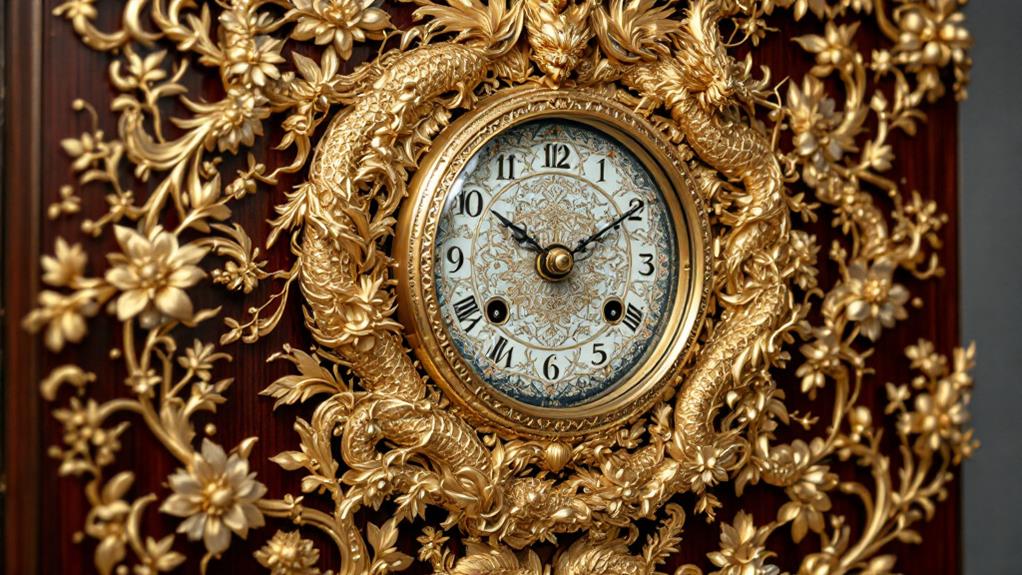
Picture a masterpiece that encapsulates the grandeur of 18th-century China: the Chinese Gilt Bronze Clock. This exquisite piece, crafted between 1736 and 1795, stands as an indication of exceptional horological craftsmanship. Sold for an astounding $4 million at a Sotheby's auction in Hong Kong in 2008, it ranks among the most expensive clocks ever made, highlighting its immense historical significance.
The Chinese Gilt Bronze Clock is far more than a mere timekeeper. It's an automaton clock that captivates with its intricate designs and mesmerizing animated elements. Imagine the delicate dance of copper and gilt bronze as fish leap and birds move with lifelike grace. Such sophisticated mechanisms, coupled with its musical capabilities, raise the clock to a splendid work of art and engineering brilliance.
Its decorative appeal is undeniable, with luxurious craftsmanship and detailed motifs reflecting the opulence of its period. The clock isn't just a functional piece; it's a dazzling display of artistic and technological advancements. Owning such a marvel means you possess a slice of history that embodies the rich cultural heritage and intricate artistry of 18th-century China.
18th Century Automaton Clock
Imagine a clock that takes you on an expedition through time, capturing the essence of the late 18th century with its mesmerizing artistry. This is exactly what the Late 18th Century Automaton Clock offers. Purchased by Liu Yiqian for a whopping €2.8 million in 2015, this masterpiece features the eight immortals of Taoism in motion. It's not just a clock; it's a lively celebration of intricate craftsmanship. Originating from the Guangzhou workshop, this rare piece is seldom found in private collections, adding to its allure.
The automaton clock combines artistry with musical functionality, making it a prized possession for collectors and horology enthusiasts alike. Its unique design and historical significance attracted significant bidding interest during the auction, reflecting the high regard for such extraordinary clocks. When you look at this clock, you're not just witnessing the passage of time; you're experiencing the cultural and artistic values of the late 18th century. It's a reflection of the craftsmanship of its period, further increasing its value and desirability.
For those who appreciate the blend of history and artistry, this automaton clock is more than just a timepiece; it's a timeless gem.
Magpie's Treasure Nest Clock
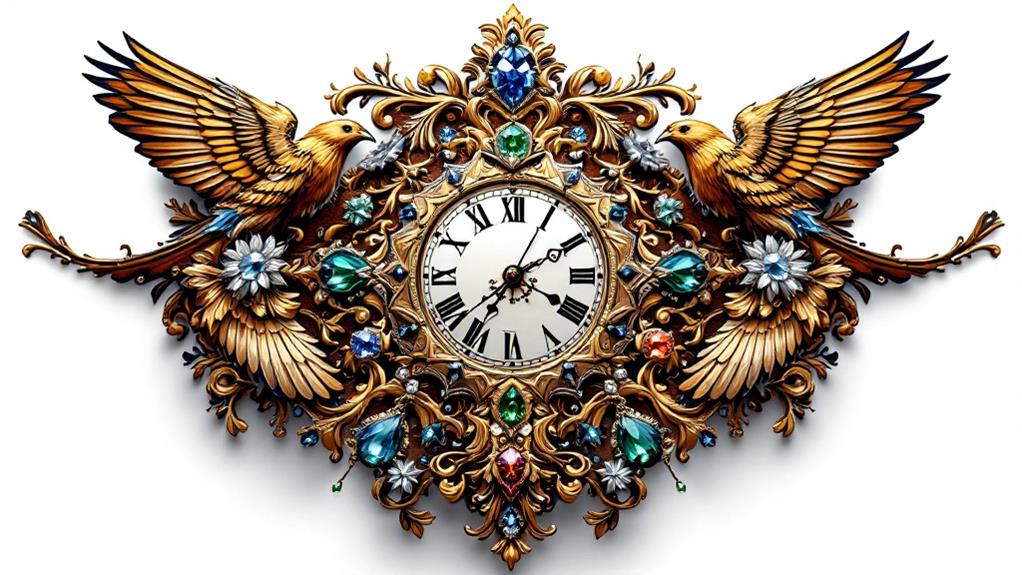
The Magpie's Treasure Nest Clock stands as a symbol of opulence and careful artistry. Crafted by the renowned Patek Philippe in 1992, this exquisite piece of art was sold for an astounding $2.31 million at a Sotheby's auction in Hong Kong in 2013. Originally estimated at around $380,000, its final auction price far exceeded expectations, highlighting its extraordinary appeal and the prestige of the Patek Philippe brand in luxury timepieces.
You're immediately drawn to its lavish design, adorned with rare gemstones such as diamonds, rubies, and mother-of-pearl. These precious stones are carefully placed to enrich the clock's unique aesthetic, making it a true masterpiece of luxury horology. The use of 18-karat gold and silver elements further accentuates its elegance, while the quartz movement guarantees precision timekeeping.
The Magpie's Treasure Nest Clock isn't just about aesthetics; it embodies the intricate artistry and attention to detail that Patek Philippe is famous for. Owning such a piece isn't merely about telling time—it's about celebrating the art of watchmaking and possessing a rare gem. This clock is a reflection of the allure and enduring value of luxury timepieces.
Thomas Tompion's Masterpiece
Regarded as a marvel of horological mastery, Thomas Tompion's masterpiece clocks are a demonstration of his exceptional craft and creativity. Known as the "Father of English Clockmaking," Tompion produced only three of these iconic clocks at the turn of the 18th century. Their rarity and exquisite craftsmanship make them highly coveted among collectors. In 1999, one of these remarkable clocks fetched approximately €1.9 million at auction, underscoring both its historical significance and substantial monetary value. Crafted from gilt brass and tortoiseshell, these clocks are celebrated for their durability and intricate designs, reflecting the pinnacle of horological artistry.
Here's why these clocks are so special:
- Rarity: Only three clocks produced, making each piece extremely rare.
- Craftsmanship: The combination of gilt brass and tortoiseshell showcases unmatched craftsmanship.
- Value: A clock auction in 1999 demonstrated their extraordinary value, selling for €1.9 million.
- Legacy: Tompion's groundbreaking clock design laid the groundwork for future horological advancements, influencing even renowned figures like Abraham-Louis Breguet.
Tompion's clocks are more than just timepieces; they're a reflection of the artistry and ingenuity that continues to inspire the field of horology.



